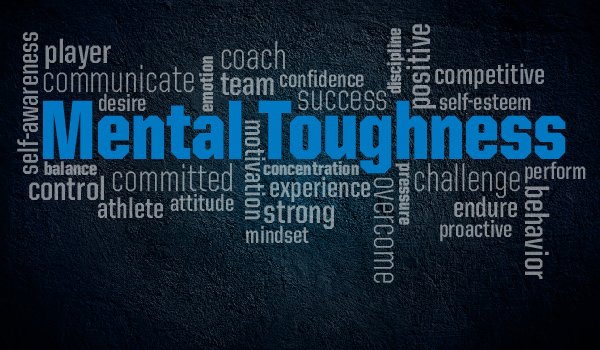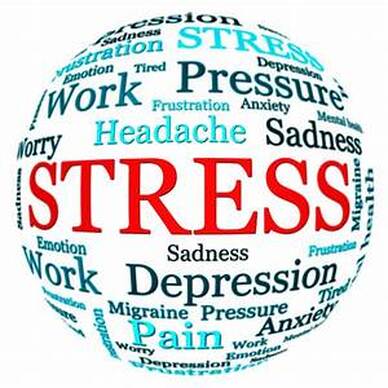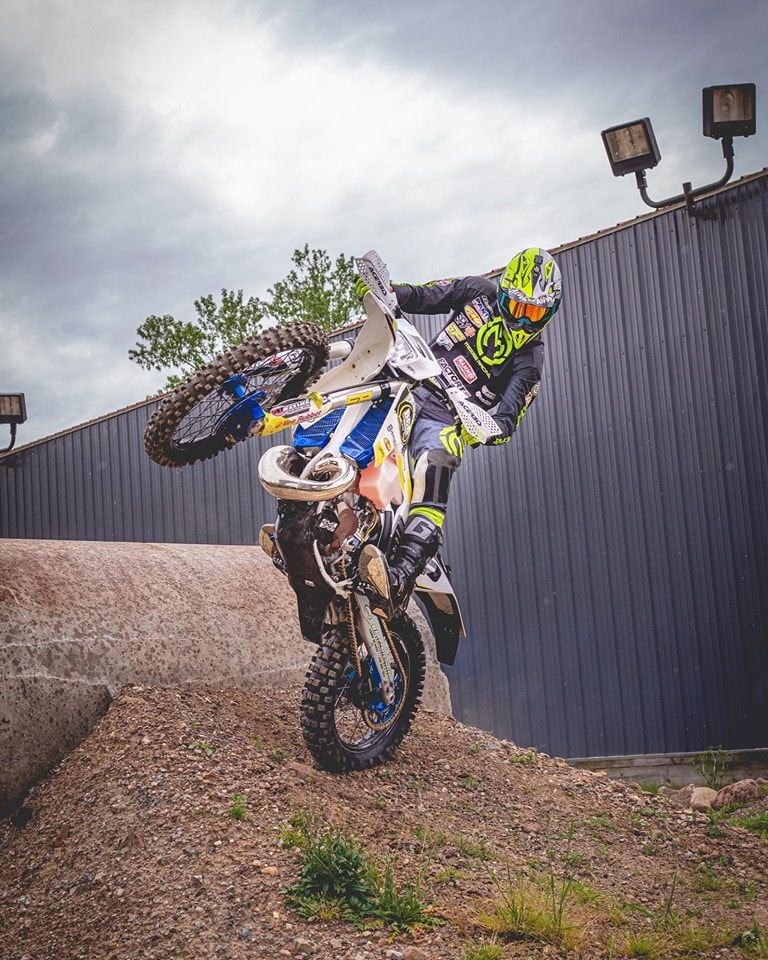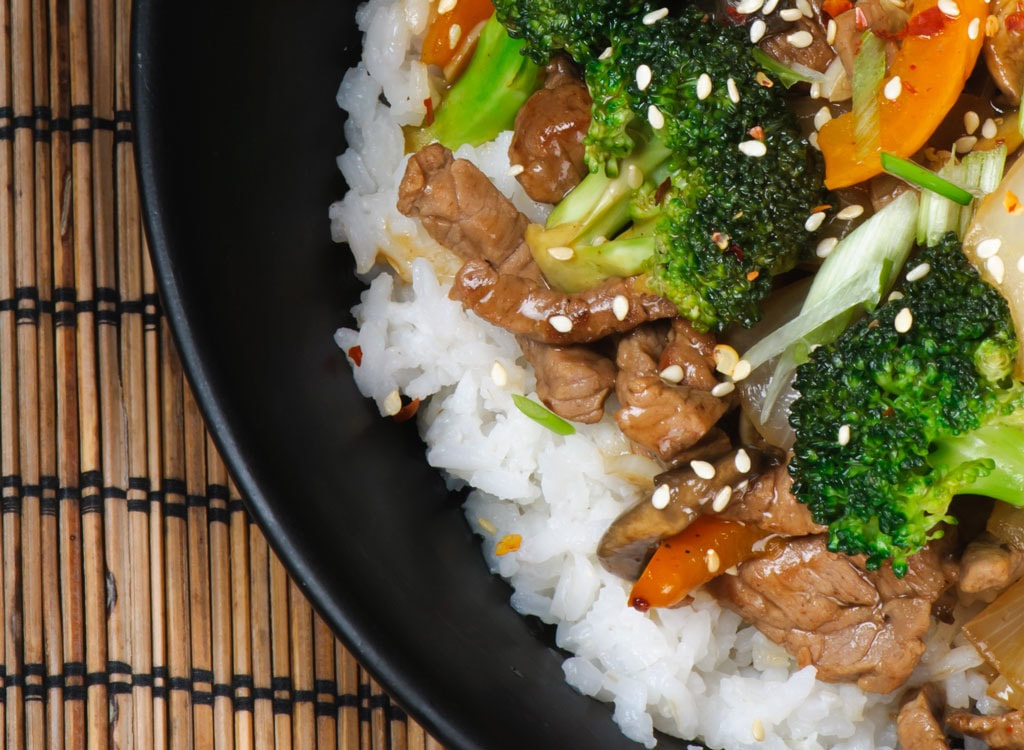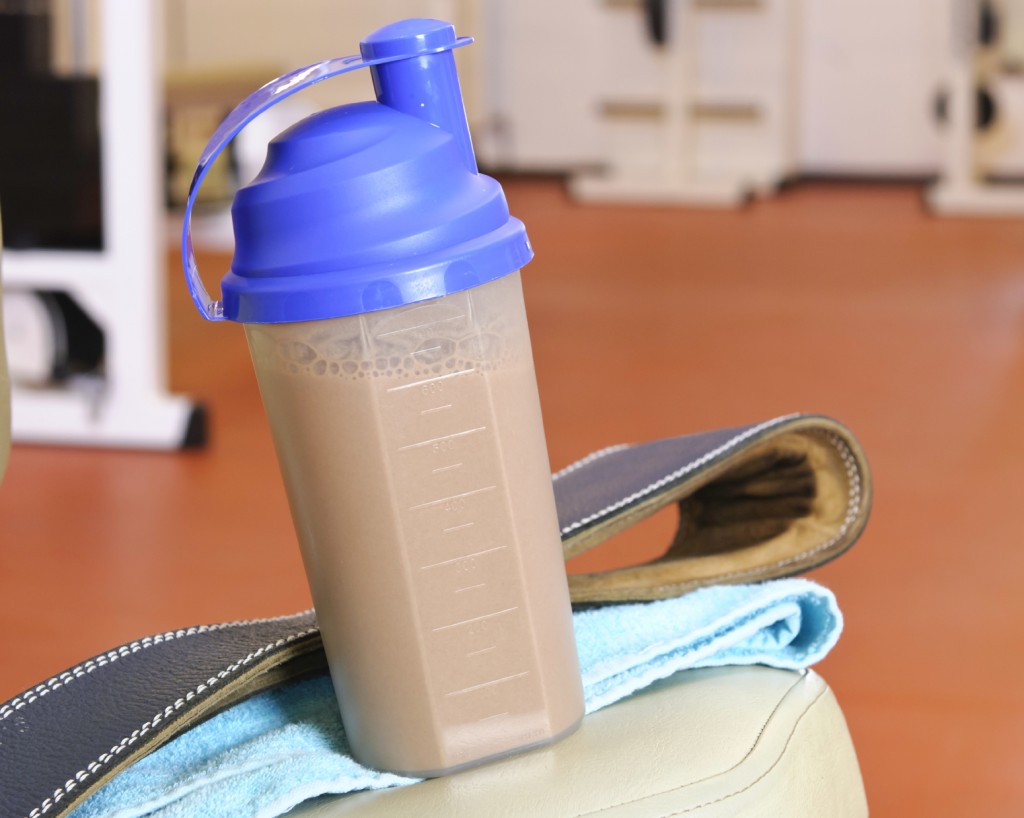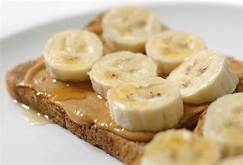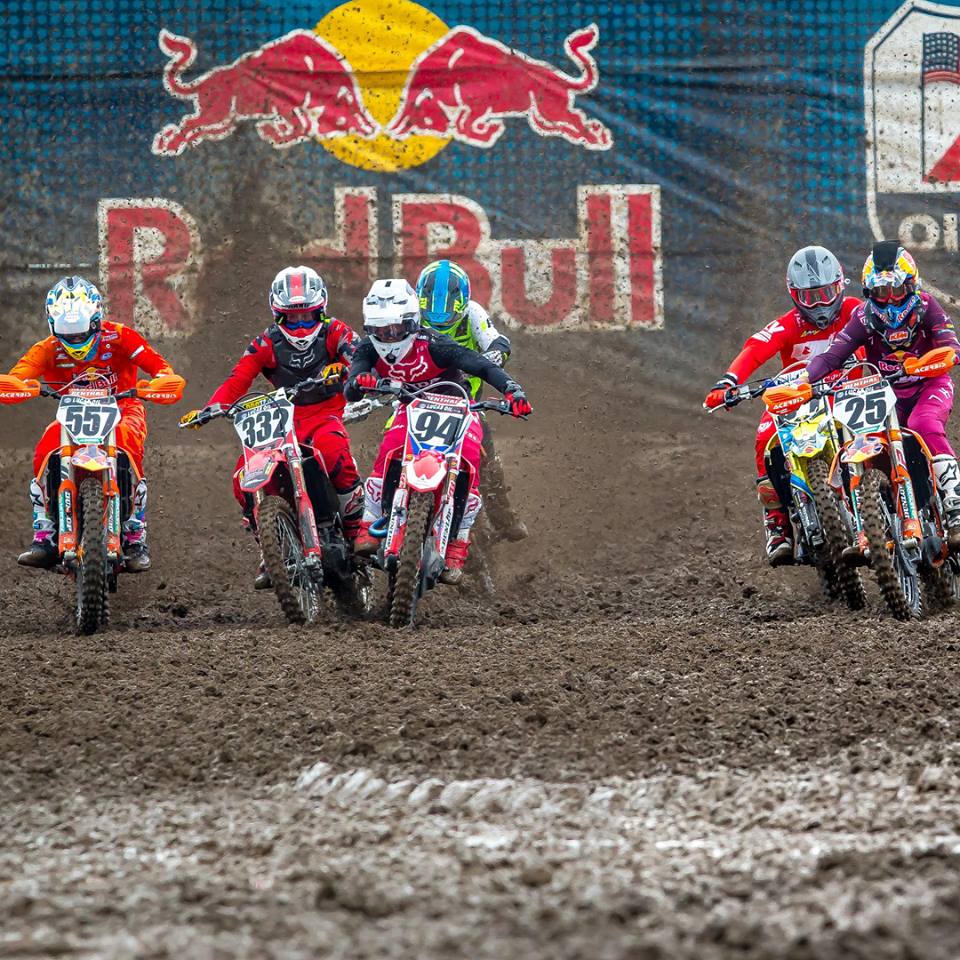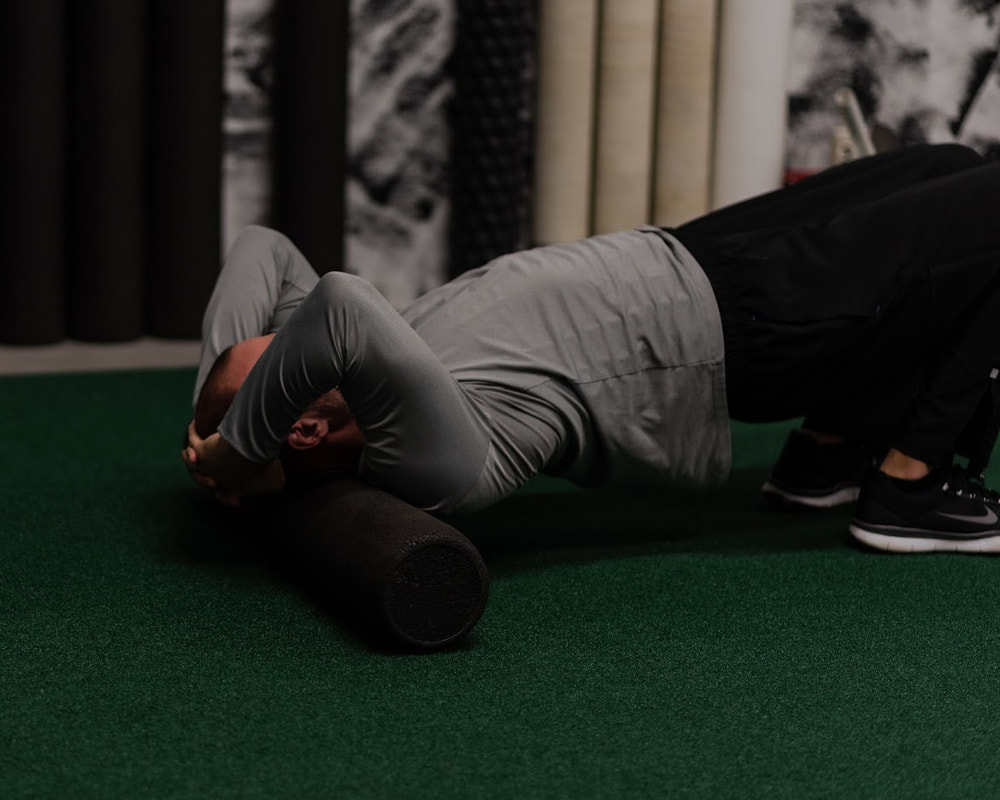|
Joel Younkins I want you to know, that in this game of fitness, a lot of people really struggle. So many people go to gyms and either do the same thing every time, or they switch it up all of the time and see NO PROGRESS at all. And they do this for months and years at a time. This training stuff is very simple on the surface, but if you don't know how to play by the rules, it's going to be really hard to win... So what is my point in this Lifestyle Blog? What does this have to do with being greedy? My point is, if you're a client of mine and you're having success, or you're not and still finding success...I want to remind you, to just take the wins as they come! When you're winning with your fitness, you are building momentum. And a very easy way to crush this momentum, is to get greedy and want more and more to soon! For example, if your Bench Press PR (personal record) improves by 10lbs in 6 months. Be happy with that and keep doing what you're doing...Everything IS WORKING! Don't feel like it should've went up 15 or 20 pounds if you were giving it your best effort. For a lot of people, they can easily lose 10lbs off of their PR's in 6 months LOL. Another example would be fat loss. If you lose 5 pounds in a month, AWESOME! Keep doing what you're doing! Some people would kill just to lose 5lbs in general! Take the W and keep letting the results float in! "But why should you remain patient and not get greedy?" "Joel, shouldn't I be motivated to do my absolute best all of the time?!" YES! You should be, and if you're getting results and winning, that's exactly what YOU ARE doing because giving it your all, is a prerequisite to getting results. The results you're getting now, won't get much better by pushing to extreme levels. Remember extreme's don't last long...And when extreme things happen too often and too long...Things go wrong and they break down... Here's just a couple things that can go wrong for the people who get greedy in their training. 1.) They Get Hurt 2.) They Get Sick 3.) They Build a Toxic Relationship with Training and Nutrition...AKA it's a miserable chore. If you find yourself winning right now, keep going! Take the small wins a long the ways. You're in this rare boat of people finding continuous success from the gym. Not just these little spurts of success. Take your victories, be happy about them, and get back to work to get that next victory that is just around the corner! Your Coach -Joel
1 Comment
Joel Younkins I know you've at least heard about Mental Toughness, or you have been exposed to this term at some point in your life. You may have heard things like... "That person is mentally tough, they never stop!" "You got to be mentally tough!" "The team that is more mentally tough, will be the team that wins!" Okay, so we've heard this before, but how do we build this umbrella mentality that so many people talk about? Most people associate Mental Toughness Development with doing things that make you suffer or uncomfortable, even if these things don't have any positive impact in your targeted goals. And because Mental Toughness is such a broad term, can you really measure the success of it? I get what people want to see out of a high performing individual when they say Mental Toughness. They want to see people who...
So, I have my philosophy on how to build this "Mental Toughness" that everyone likes to talk about that I want to share with you. My plan is very confusing so pay attention closely (sarcasm)... 1.) High Expectations If you expect yourself to do something a certain way all of the time, it's easier for that to be a reality to believe in yourself. Even when things get hard, you still believe because of your predetermined expectations that you've put on yourself. 2.) Consistency In your work/preparation, build consistency. This will make your performances more and more consistent. When consistency becomes more and more concrete for you, outside forces will have a harder time disrupting your consistent performances. 3.) Preparation Prepare Prepare Prepare. When you're prepared Physically, Technically, and Tactically, you are extremely difficult to beat! I 100% believe that building Mental Toughness is a slow process that is always on going by doing things right in your preparation. When you are preparing, keep your expectations high for yourself, be consistent in your preparation, and make sure when you are preparing, you are preparing for the right things that you'll be up against...When the time comes to shine, and you've been doing these three things very well, people will be saying that you're the one who is Mentally Tough! Talk soon! -Joel Thanks for reading and hope you found some great value! We have a favor to ask from you. We want to share our free content to help other people like yourself become more educated on fitness and wellness. Please take a moment to like and share the blog post on social media, tell a friend, and engage with the authors by commenting below and asking further questions. We thank you for the support and promise to keep over delivering you with more value! Joel Younkins I'm extremely confident that we're all familiar with stress. We've all experienced it on different levels and on different extremes. We stress about things like, dealing with your boss, dealing with a break up, being stuck in traffic, being mad at someone, etc. We also should realize that stress is a silent killer. Prolonged stress can lead to health conditions and diseases if not treated properly. You see, your body hates being stressed for long periods of time, this is when things start to break. Your body likes to operate in homeostasis, which is your "normal" functioning state. When chronic stress builds up for too long, bad things start to happen. Now, as you were reading that paragraph I hope that I didn't freak you out and make you think that your training is going to break you or give you a disease. There is also stress that we deal with that can be positive for us. Imagine riding a roller coaster; you're scared, nervous, and excited all at the same time. But it's over and done with in a short period. After the ride you feel more alive than ever because of the adrenaline rush. This is a positive stress experience! Training is simply applying a stress to your body, and planning to allow for a positive adaption to happen. We see the Bench Press as a Bench Press. Our bodies see it as something that is trying to kill us. So internally, things happen so that we can press the weight back up. After this stress response happens, the body will repair itself so that it will be prepared for this danger to happen again. This is how we get stronger and in better shape! How can this go wrong for us? I'm going to give you a few points on how this concept won't work for us if we screw this up...
So what do you need to do with this information? Good question! You need to realize that training is a stress and that you need to be able to positively respond to it. Here's a few key points to take away from all of this!
If you want more information, or want help with training, CLICK RIGHT HERE! Cheering for YOU! -Joel Thanks for reading and hope you found some great value! We have a favor to ask from you. We want to share our free content to help other people like yourself become more educated on fitness and wellness. Please take a moment to like and share the blog post on social media, tell a friend, and engage with the authors by commenting below and asking further questions. We thank you for the support and promise to keep over delivering you with more value! Joel Younkins Have you ever thought eating healthy was so much more expensive? Do you feel that way right now? Well if you said yes to either of these, I'm going to help you realize that this statement is very inaccurate. Before I explain to you why this isn't true, I'm going to first help you realize what healthy eating really is, because a lot of people don't really know what the concept eating healthy actually is. Eating healthy is eating whole foods, very few processed foods, and foods that are as close to their natural state as possible. We're eating Lean Protein, Clean Carbs, Healthy Fats, Fruits, and Vegetables. It's focusing on not neglecting any of these areas and eating till your full, not stuffed. Also, it's about eating enough to support your lifestyle and goals! Healthy eating is not...
Now, this is the point where we speak numbers and cost. First off, wherever you grocery shop, is up to you. Supporting your local butchers and local farmers will give you a great bang for your buck in regards to price to quality of food ratios. But as far as groceries stores go, I prefer to grocery shop at Aldi's. For 2 reasons... 1.) There's less choices of foods, so this makes for simpler decisions and less temptations in the store. 2.) You save a lot of money. I estimate that I save $400/month by shopping at Aldi's in comparison if I shopped at Giant Eagle every weekend. To bring in my point about this Lifestyle Blog, I wanted to give you some examples of some Healthy Foods that you can prepare in bulk that will cost you very little for yourself or even better for a family. These foods will be even cheaper than the dollar menu at Fast Food joints. So instead of comparing a bunch of things, I'm going to give you a few thoughts and you will see how non expensive healthy eating has to be.
Now, do you want to know what is really expensive?
I hope you can see that eating healthy doesn't have to be this crazy expensive journey that you have to go down. You don't even have to shop at high end grocery stores or food markets. You just need to be eating real foods. If your budget allows for organic, and you like organic products better, than that's fine. If you want to add some supplements like protein powder and a multi-vitamin (even though these are processed) that's fine too. But there's no need to go crazy. A recent meta-analysis says that eating healthy is only $1.50 more a day. And that's a small trade off for big results. And, I'm very confident that you could easily save a lot more money if you shopped correctly! Talk soon! Thanks for reading and hope you found some great value! We have a favor to ask from you. We want to share our free content to help other people like yourself become more educated on fitness and wellness. Please take a moment to like and share the blog post on social media, tell a friend, and engage with the authors by commenting below and asking further questions. We thank you for the support and promise to keep over delivering you with more value! Joel Younkins If you're familiar with JYT, it won't take long to realize that one of my niche clientele is Motocross and Offroad Racers. Since the beginning days of JYT, meaning my very first ever client being a Motocross Racer, I have worked with a lot Professional Racers and also very highly dedicated Amateur Racers as well. In this Lifestyle Blog, I'm going to share a few insights that I have gained throughout coaching these Professional Racers over the past 10 years. These pro's have been both Factory Riders as well as Privateer Riders. I spend more hours a week with these racers than you probably do with your best friend. And these same racers, I have worked with them for months to years on end. So I truly believe I get to have key insights to their careers. If you're a competitive racer, whether a beginner or someone not quite at that pro level yet, my goal is to give you some key insights on things that I've learned the pro's do, that maybe you can take away some value that you can imply into your very own racing program! 1.) They're Not Playing Any Games Elite racers only care about making progress to achieving their goals. Just like when you watch them race, they're full go and they bring that mentality to their preparation. Whether it's on their bike or for themselves, they are willing to make whatever changes necessary to see the results they want. The only X-Factor is, they have to believe in it first. Once they believe that something will help give them an advantage (whether it's right or wrong) they will fully be locked in on it. 2.) They Do Not Accept Unorganized Preparation One thing I've learned about Professional Racers, is when everything is a huge cluster heading into a race, they tend to stress out easily over these details. They expect themselves, their bike, and everyone else involved in their program to be ready to go well before they get to the race track. When things get pushed till last minute, you start to see anxiety levels rise in them, and you can see the frustration building when they feel like things are unorganized or being delayed. Some may take this is as them being dramatic (or whatever adjective people could use), but I see it as being a perfectionist and keeping expectations high. 3.) They Outsource What They Don't Know This one stems from #1, racers aren't afraid to ask for help when they know they need it. Whether it's hiring a Trainer, a Riding Coach, or seeking help to improve their bike, they're open for help and opinions to better their career. Most of the time, they're not worried about their pride and they are more concerned with their results. They know they do not have all the answers but are willing to find those who do. 4.) They Practice As Much As Possible Pro Racers practice a lot. And a lot depends on who you're talking about if you're expecting me to throw out numbers right now. But most will practice at least a couple times a week for a couple hours at least. More if they are not in competition season. But you may think, as amateurs, practice would never hurt since this group of racers are not the ones who are experts on the bike. Yet a lot of amateur racers, only practice a handful times out the year and just focus on the racing part of it. But the guys at the top, practice way more than they compete. Look I get what you're thinking right now, you work, you have only one bike, and you're trying to get it ready just get to the races each weekend. But I'm just giving you the realization of how much emphasis they put into riding during the week and how much the pro's actually value the time of practice. 5.) They Will Die For Racing When it comes to priorities, you better believe that racing is Top 2 in their life, 3 at the most. For the racers that are in the meat of their career, there is no other option of not racing, no immediate back up plans, it's racing over everything. This is what they were born for and they're trying to fulfill their destiny. They know they can get hurt, and that they eventually will, but that's deep in the back of their mind. It's do or die mode for them all of the time and they're willing to risk everything for the glory of winning. Conclusion I realize that majority of you reading this, are not a professional racers. And I'm not telling you to do what they do and live how they live. They are playing in a different ballpark than the rest of us riding our bikes for enjoyment. What's on the line for them, isn't the same as everyone else. But, if you're looking to improve at your riding/racing, maybe their are some small lessons we can take away from what the best in the world do. If they take these areas seriously, it probably wouldn't hurt to take these same areas a little more serious too if you're trying to improve your very own racing career. Good Luck! Thanks for reading and hope you found some great value! We have a favor to ask from you. We want to share our free content to help other people like yourself become more educated on fitness and wellness. Please take a moment to like and share the blog post on social media, tell a friend, and engage with the authors by commenting below and asking further questions. We thank you for the support and promise to keep over delivering you with more value! Joel Younkins Two weeks ago we discussed the benefits of a Pre Workout Meal and how this meal can help give you immediate energy to help fuel your workouts and to make sure that you're getting the most out of each session! Last week we discussed how a Workout Shake can be beneficial to help you put back in what you're losing during training and to help jump start your recover process! This week, we're going to discuss the Benefits of a Post Workout Meal! The Post Workout Meal should happen anywhere between 1-3 hours after your training session. Too soon, and your body may not be ready to handle eating a full meal (again why a shake is usually more beneficial during times near training). Too late, and you will be delaying the recovery process from the workout you just completed. Your Post Workout Meal should consist of Protein, preferably lean protein with a lower fat content. It doesn't have to be as low as your Pre Workout Meal, but we should NOT be shooting for a High Fat Meal even if it's "healthy fats." Fat will slow down digestion fats of protein, so it's important during this time frame to allow for faster digestion rates of the protein that you're consuming. You should at least have 20 grams or more protein for this meal. Bigger the person, the more protein you can have. Ideally you want to consume the same amounts of protein at every meal to reach daily protein requirements (0.8-1g/LB of BW) Your Post Workout Meal should also consist of Starchy Carbohydrates like Rice, Potatoes, and Pastas. Having carbs will not only help your recovery by filling up your glycogen stores (this tells your brain that you're in a state of recovery) but it will also help increase the rate of protein synthesis (this is a good thing!). You can have fruit in this meal too which will help replenish your liver with fructose (the good fructose), but do not rely on them specifically to help you increase protein synthesis rates. You should have at least a 1:1 ratio of Carb to Protein during this meal. 2:1 is probably better for most people, and higher level athletes can extend this ratio to 4:1. Your Post Workout Meal can have Vegetables in it as well. The main benefits of these vegetables is simply to place in an additional serving for the day. They won't necessarily have any direct impacts on your Workout for that day, but for health reasons, you do not want skip out on your vegetables. Keep in mind, that this meal should NOT consist mainly of vegetables, but some is just fine. For now, this just about wraps it up. There's a done of more depth that we can get into when designing Pre Workout Meals, Workout Shakes, and Post Workout Meals, but I wanted to give you the key essentials of what is important and why they are important! Talk soon! P.S. This was a direct insert from my latest weekly VIP Newsletter. If you liked what you read here on this page, and would like to read more information like this in regards to your training progress, be sure to subscribe by clicking the button below! Thanks for reading and hope you found some great value! We have a favor to ask from you. We want to share our free content to help other people like yourself become more educated on fitness and wellness. Please take a moment to like and share the blog post on social media, tell a friend, and engage with the authors by commenting below and asking further questions. We thank you for the support and promise to keep over delivering you with more value! Joel Younkins Last week we talked about some benefits to having a Pre Workout Meal. This week I want to share with you some benefits of a Workout Shake, timing, how to build it, and how important is it actually to have one. First, what are the main benefits of having a Workout Shake? Well it's a shake because during exercise or right after, it's hard for your body to digest and break down solid food forms. Therefore a shake will be easier for your stomach to handle. Also, because hours will go by from your Pre Workout Meal and Post Workout Meal (next weeks newsletter) this will help fill that void in your schedule. This shake is meant to help replace what you are losing and for starting the recovering and rebuilding process from training. Secondly, let's start with the timing of the Workout Shake. Assuming that you have your Pre Workout Meal in order, you shouldn't start drinking this shake as early as the start of your workout. You can also drink this right after your workout as well. My general rule of thumb is this, if your workout is brief (30-60 minutes max) and it's not very grueling, you'll probably be fine with consuming this post workout. But if your workout is longer than 60 minutes, and/or its a grueling workout, you should probably be sipping on this drink throughout the training session. Third, let's talk about what we can use to build this shake.
Now, if you're not already utilizing a Workout Shake, or yours doesn't look quite as thorough as this list above, don't freak out and think that you're ruining all of your progress. Workout Shakes only help optimize your overall training and nutrition efforts. This is a small piece of this holistic puzzle, but I want you to have this information because it can be helpful to make a little extra progress if you feel like you're ready to add this into your plan! Talk soon! P.S. This was a direct insert from my latest weekly VIP Newsletter. If you liked what you read here on this page, and would like to read more information like this in regards to your training progress, be sure to subscribe by clicking the button below! Thanks for reading and hope you found some great value! We have a favor to ask from you. We want to share our free content to help other people like yourself become more educated on fitness and wellness. Please take a moment to like and share the blog post on social media, tell a friend, and engage with the authors by commenting below and asking further questions. We thank you for the support and promise to keep over delivering you with more value! Joel Younkins We all know Nutrition is important, especially if you're trying to improve your physique and physical performance. I've said it before, that your nutrition should be built around your training goals and lifestyle, so today we're going to dive a little into one part of building your nutrition into your training and lifestyle. Let's enter the world of Pre Workout Nutrition! Pre WO Meals fall into this category called Nutrient Timing. It's not the most important element in regards to a proper meal plan, but it's up there and it can either drastically improve or decrease performance in your workouts depending on how you utilize this. First, let look at what a Pre Workout Meal can look like.
Second, it's good to realize why Pre WO Meals are important.
Make sure, that you get something in you before your workouts (preferably some protein carbs together). Whether that's a regular sized meal 1-2 hours before your workout, or something smaller 30-45 minutes prior to training, it will be extremely beneficial to your training progress and physique goals. Talk soon! P.S. This was a direct insert from my latest weekly VIP Newsletter. If you liked what you read here on this page, and would like to read more information like this in regards to your training progress, be sure to subscribe by clicking the button below! Thanks for reading and hope you found some great value! We have a favor to ask from you. We want to share our free content to help other people like yourself become more educated on fitness and wellness. Please take a moment to like and share the blog post on social media, tell a friend, and engage with the authors by commenting below and asking further questions. We thank you for the support and promise to keep over delivering you with more value! Joel Younkins In this Lifestyle Blog, I wanted to share a collective list of 10 Things that all Motocross & Off Road Racers should be doing regularly to help physically prepare them for competition. This is not the only 10 Things that you need to be doing, but if you can check off all of these, you're in a very good place in your Physical Preparation. Check out this list below to see if your checking off all of these boxes... 1.) Strength Train 2-3 times per week You're a racer, you need to be strong for performance reasons and for injury prevention reasons. Strength Training isn't just about weight lifting a barbell either, it can be body weight exercises, bands, dumbbells, and machines. Using a combination of these training tools 2-3 times a week will help improve strength levels! 2.) Perform Mobility/Flexibility Drills during each gym session If you want to feel good and help your chances to remain healthy, perform some Mobility & Flexibility drills during your gym workouts. I'd suggest performing Mobility Drills in your warm up and using some Stretching Exercises as a cool down. By doing this, you can help even increase the length of your career! 3.) Perform an active warm up before your races Be physical ready to go when the gate drops, and stop relying on just adrenaline to get you going. Whether you perform some light cardio work, calisthenics, or some mobility drills, this will help ensure you are physically ready to compete from the get go! 4.) Perform both Low Intensity and High Intensity Conditioning When performing your Conditioning Training, make sure you don't fall into the categories of performing only Low or just High Intensity work. You will need a combination of both throughout your competitive season. Think; Low Intensity=Build Endurance & High Intensity=Strength of Heart Muscles! 5.) Consume lean protein at every meal Protein isn't just for Bodybuilders, it's for everyone, especially athletes. Protein will help you rebuild from vigorous training, practice, and competition. It will help protect against muscle loss and it will help rebuild every cell in your body. A few lean protein sources could include, Chicken, Steak, Ground Beef (90/10 or leaner), Eggs, Turkey, Fish, and Whey Protein! 6.) Consume "clean" carbs at every meal For racers, carbs mean energy. It is very important that you are feeding yourself clean carbs at every meal. This will help you recover from hard workout and practice, but also allow you to fuel up for the next session. Don't fall into the Keto trap unless you want to see your performance decline! 7.) Consume "healthy fats" over trans fats Trans fats do nothing for you unless you are starving to get in calories. They yield no positive Physical Performance benefits other than them being extra calories if you're in dire need of them. Trans fats are fried foods, baked goods, and most fast food places. Get majority of your fats in by consuming healthier options fats like Olive Oil, Avocados, Nuts, Coconut Oil, Butters, etc instead of fast food spots. 8.) Drink at least half your body weight in ounces of water every day This is your minimal requirement. If your urine isn't pale yellow to clear, you need to drink more of it! 9.) Add salt to your meals Salt is great for balancing out all of the water that you've been drinking. It will help improve the functions of your muscles as well. Add small amounts of Iodine Salt to your meals just to taste. More is not necessarily better! 10.) Plan your riding practices I'm not a riding coach, but believe me, you need to have a plan when you practice. I see too many racers just trying to log in as many 30 minute motos in as possible. And this is good, but are there areas that you need work on to improve your game, but you're neglecting because you are not planning for it? Have certain objectives each riding session and be sure you're addressing your weak areas, this is what practice is for, to improve your skills. When your riding your bike with a high amount of efficiency, you will you save a lot of energy! Thanks for reading and hope you found some great value! We have a favor to ask from you. We want to share our free content to help other people like yourself become more educated on fitness and wellness. Please take a moment to like and share the blog post on social media, tell a friend, and engage with the authors by commenting below and asking further questions. We thank you for the support and promise to keep over delivering you with more value! Joel Younkins It was not too long ago, all the hype made it seem like the holy grail to your success with your workouts was to use a Foam Roller religiously. Now many Fitness Professionals claim that Foam Rolling is made out to be a waste of time when looking to improve your training sessions and quality of muscle health. What's going on here? Just like what happens to so many topics in the Fitness Industry, sides get taken and we end up with extremes. Seems like a line has been drawn in the sand once again... What is my take on this topic, and what do we do? Lets discuss! First, Foam Rollers are intended to help you "massage" your soft tissue (muscles and fascia) on your own. Whether you are stiff, sore, or suffering from a muscle strain, a Foam Roller is a possible tool to help your problem. Research is still very limited on Foam Rolling since it's a relatively new tool, but in the research that we do have, it shows to have some good short term benefits. And this is where my philosophy lies with using them. I do not believe that Foam Rolling is the key to fixing all of your muscle issues. But what I do believe is that it can make an impact to help you feel better in a short term time frame. These attempts to create short term progress over an extended time, can potentially add to for long term progress of keeping your muscles healthy and pliable. I also believe that if you are experiencing some acute muscle shortening in certain areas, foam rolling can help work these issues out before they get out of hand and you get yourself into deep water. For example, if you're running a lot, your I.T. Band (long muscle on the side of your leg) may start tightening up. Before it gets too debilitating, you could use a foam roller to help reduce this tightness and discomfort. We have many case studies here at our facility of using a Foam Roller and other self massage tools (like a PVC Pipe and Lacrosse Ball) to help clean up some of these small issues, before they become larger issues and need to be outsourced for more aggressive measures! Where I think a Foam Roller really shines is before your warm up. Because Foam Rolling seem to have short term effects, performing 5-10 minutes of Foam Rolling prior to your warm up can potential help you "feel better" before you even start to train (the psychological benefit could be just enough to enhance your workouts). Whether you're still a little sore from previous training, stiff from driving in your car, or dealing with some tight areas on your body, I 100% believe that Foam Rolling can help reduce some of these symptoms to allow you to feel better and receive a higher quality of workout. So what do we do at JYT with our Foam Rollers? Basically what I have already outlined above. We program in a couple different mandatory Foam Rolling movements for our clients to perform before each session. We have them roll out their back 30-60 seconds, their glutes 30-60 seconds each side, and their quads for 30-60 seconds before every workout. If they have any other tight or tender areas, they can roll those areas out as well. After this series, we then begin our active dynamic warm up. We don't live and die by Foam Rolling, but when you have a few of them on hand, the reality that they're pretty cheap, and it only takes a couple of minutes to potentially just feel better before you start your workout, to me it's a no brainer to incorporate into a training program. But before you jump on a Foam Roller, don't expect it to magically heal a serious injury like a herniated disc or a pulled hamstring. Just realize that for only a couple minutes to get some short term benefits for your workout, it may be really worth that time and effort to sneak this in before each workout. Thanks for reading and hope you found some great value! We have a favor to ask from you. We want to share our free content to help other people like yourself become more educated on fitness and wellness. Please take a moment to like and share the blog post on social media, tell a friend, and engage with the authors by commenting below and asking further questions. We thank you for the support and promise to keep over delivering you with more value! |
The JYT BlogCoaching |

